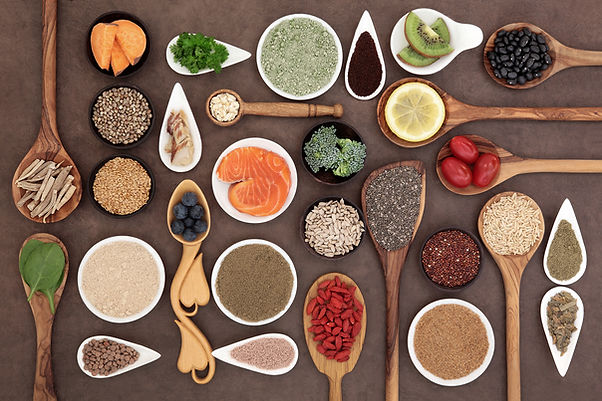Hashimoto Foods


Cooking Basics
For those who are experienced cooks I apologise in advance if I am teaching you to suck eggs (as it were), however, in order to recreate the recipes I am sharing on the website there are some key principals, tools and processes I follow that you will need to re-create. Of course, you can go ahead and try to adapt my approach to your own, but I do recommend using my way in order to get the most out of the recipes I am sharing.

Ingredients
I wish I could say I only buy bio or organic foods and ingredients, but that would make me very poor very quickly as I am not that wealthy. I do, where possible, stick to organic produce as I personally believe that pesticides used on crops and hormones used in meat are incredibly detrimental.
More importantly for those suffering from Hashimoto is the balance of good food versus the slower metabolism and the resulting battles with body fat. Interestingly, as you reach your middle age even a non-Hashimoto body’s metabolism slows down and the battle with body fat becomes much more of an issue. I am, therefore, quite happy to adopt a lot of the changes my wife needs in her diet. Simple changes that can make a big difference include:
-
Swapping processed for unprocessed. A good example of this is rice, stop using Basmati and start using brown rice or wild rice instead, you do have to cook it longer, but the flavour can be a huge (and positive) difference. Try Thai Red Cargo rice or Camargue red rice with your casseroles. Try Black rice, which is incredibly rich in antioxidants that are good for Hashimoto sufferers, in salads
-
Using new ingredients. Here, a great example is binding agents for stews, sauces or gravies. Instead of using flour, try powdered Arrowroot, available in many health shops. Although it is a fine powder, my tip is to sieve it into the sauce you are trying to thicken, this avoids getting clumps. It has no real flavour, but has the same effect as flour for making sauces thicker, just three to four teaspoons can be enough
-
Use whole, fresh herbs and spices. We all have a tendency to grab the ready powdered or dried spices/herbs from the shelves in the supermarkets, but boy does it make a difference if you use the real thing. I am such a convert we now grow our own herbs and even chillies. If using new herbs put them in your food at the end of cooking, at the start if dry
-
Being wary of favourite cooking aids, for example stock cubes. I was stunned to discover that oxo stock cubes contain wheat and, therefore, gluten. Question and check all the ingredients you are used to using, you will also be surprised how much contains gluten, e.g. Couscous contains gluten, so I now use chickpea Couscous
We are lucky enough to have a garden/allotment where we can grow our own organic produce, which we use as much as possible. You can see this in the video below.


Tools
Following on from my point on spices above, I love Indian and south-east Asian cuisines. Particularly for Indian dishes, gently roasting the whole spices in a dry pan before grinding in a spice mill or pestle and mortar makes the dishes explode with flavour and I mean that in a good way!
To ensure you get the most out of the vegetables that you use to accompany food, I strongly recommend steaming as this does not destroy the vegetables and you benefit from keeping much more of the vitamins that are lost in boiling. You can also use the water as a thin vegetable stock for some dishes. Steamers are easy to source, mine I bought in Sainsbury’s many years ago and I couldn’t do without it.
Even salt and pepper tend to be bought and used in ready milled form. I highly recommend buying and using salt and pepper mills, use large sea salt chunks and pepper corns in these and the flavour you get is so much better than the pre-prepared powdered stuff. You will note a lot of my recipes reflect this, where I often say use a "twist of" salt or pepper.
When it comes to vegetables, organic or bio is best as the pesticides used in other crops can be detrimental to our bodies. We now grow a lot of our own salad and vegetables in our garden so we can be sure of their organic nature.
Proteins are important for the body, but you can get a lot of your required protein from other sources than traditional meat products. Meat protein, however, contains several important nutrients for thyroid function including selenium, zinc, iron and tyrosine. When using meat in recipes, try to buy organic and (where possible) best is free-range meat as intensively farmed animals tend to be fed with food stuffs heavy in pesticides or are given antibiotics/hormones that your body should not be subjected to. We have greatly reduced the amount of meat we eat each week and tend to use Chicken, Prawns or Salmon where possible with Beef and Pork for only special occasions.







